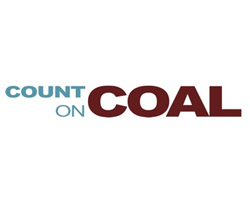Reversing the Anti-Coal Supertanker

January 9, 2019 - If anyone has ever told you, “it’s like turning a supertanker,” you know the task at hand isn’t going to be easy. The analogy beautifully captures the immense challenge of reversing momentum. For all the energy required to get that proverbial supertanker moving, it can be doubly difficult and slow to change its course.
Reversing the momentum of eight years of anti-coal policy is as you’d expect, not an overnight affair. The last administration worked tirelessly to make it more difficult and costlier to both produce and use coal. The assault on the industry spared no punch. There were air and water rules, standards for existing plants, new and completely arbitrary standards for new plants, land withdrawals and moratoriums – the list goes on and on. While coal was under a regulatory bombardment, its competitors benefitted from tens of billions of dollars in federal and state subsidies and a dizzying array of portfolio standards guaranteeing them a market. The outcome left little in doubt.
While many of the anti-coal efforts promulgated by the former administration rested on shaky legal ground and were stopped cold in court – take the Mercury and Air Toxics Standards or the Clean Power Plan – the cumulative effect of this onslaught was a coal industry in sharp decline.
(1).png)
In 2011, the Mine Health and Safety Administration (MHSA) reported a highwater mark for coal mining employment under the last administration at 143,940 coal miners. All of five years later, more than 62,000 miners had lost their jobs. Nearly half of the coal-mining workforce was gone, and the supertanker of anti-coal policy was still advancing, further building its head of a steam.
It was no coincidence that then candidate Hillary Clinton told an Ohio townhall, "We're going to put a lot of coal miners and coal companies out of business." She knew well that the ground had been laid for the dismantling of the coal industry and she was prepared to double down. It is through this context, this lens, that we must evaluate the trajectory and health of the coal industry.
It’s currently in fashion with some members of the media to suggest the Trump administration has failed to keep its promise to coal miners and coal communities. These stories point towards further coal plant retirements as evidence of promises not kept. But while coal plant retirements are an important metric, and should be of deep concern to those that care about the reliability of the electric grid or the diversity of the nation’s electricity mix, they hardly tell the full story.
(1).png)
Coal mining employment – the metric most important to coal communities – doesn’t jive with the media’s narrative. Following year after year of hemorrhaging job losses under the last administration, the bleeding has stopped. This administration’s regulatory reset, it’s effort to allow coal country to stabilize, has produced results. Not only have the job losses halted – a significant achievement on its own – but the industry is actually hiring again.
The alternative to today’s stability, put on display for the world to see in that townhall in Ohio, must be the measuring stick for the current health of the coal industry. Has more been at stake for an industry and the communities it supports in a single election?
The last administration had a full eight years to build up the momentum of its anti-coal policies. The damage done from those efforts cannot be repaired overnight nor in just two years. In fact, that supertanker continues to bear poison fruit. But the stabilization of the industry today is a remarkable story, even if the media has failed to recognize it.

